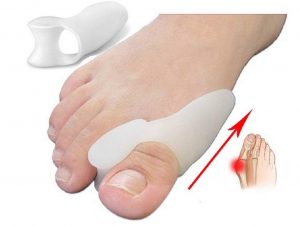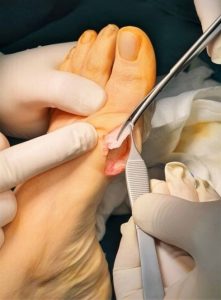Hallux valgus, also known as a bunion, is a common foot condition that affects the big toe joint. It is characterized by the misalignment of the big toe, causing it to angle towards the second toe. This results in the protrusion of the joint at the base of the big toe, which can cause a variety of symptoms such as pain, discomfort, and difficulty wearing certain types of shoes.
If you’re suffering from hallux valgus, you’re not alone. Millions of people are affected by this condition, and it’s important to know that there are effective treatments available. But first, it’s important to understand what causes this condition.
The cause of hallux valgus is not entirely clear, however, it is believed to be a combination of genetics and lifestyle factors. Wearing tight or ill-fitting shoes, as well as certain medical conditions such as arthritis, can also contribute to the development of bunions. People who have a family history of bunions or are at a higher risk of developing the condition are more likely to experience this problem.
Symptoms of hallux valgus include a visible bump on the side of the big toe joint, pain and discomfort when wearing shoes, and redness and swelling at the joint. In severe cases, the big toe may overlap the second toe, making it difficult to walk. The bump caused by the condition is usually tender to the touch and can be red and swollen. Pain may be felt when walking or standing for long periods of time, or when wearing tight or ill-fitting shoes. In some cases, the big toe joint may become stiff and difficult to move.
Diagnosis of hallux valgus is usually made by a physical examination of the foot and an x-ray to evaluate the condition of the big toe joint. The x-ray will show the degree of the angle between the first and second toes, and will also show any degeneration of the joint.


Treatment for hallux valgus can include non-surgical options, such as wearing shoes that provide more room for the toes, using orthotics to support the foot, and taking over-the-counter pain medication. In some cases, a custom-made orthotic can be prescribed to help redistribute weight away from the big toe joint. These orthotics can be worn in shoes and can help to reduce pain and discomfort.


For those who are experiencing severe pain and difficulty walking, surgery may be necessary to correct the alignment of the big toe. Surgery for hallux valgus can be done using a variety of techniques, depending on the severity of the condition. The most common surgical procedure for hallux valgus is called a bunionectomy. This procedure involves removing the bony bump and realigning the bone.
Recovery from bunion surgery can take several weeks to several months, depending on the type of procedure and the individual’s health. It is important to follow the post-operative instructions given by the surgeon, including wearing appropriate footwear and using crutches or other assistive devices, to ensure proper healing.


Prevention is key to avoiding hallux valgus. Wearing shoes that fit properly and have a wide toe box can help to prevent the development of bunions. Avoiding high heels and shoes with a narrow-toe box is also important. Stretching exercises, such as pointing and flexing the toes, can also help to keep the muscles and tendons in the foot strong and flexible, reducing the risk of developing bunions. Maintaining a healthy weight and avoiding activities that put excessive pressure on the feet, such as running or playing sports on hard surfaces, can also help to prevent the development of bunions.
In addition to the preventative measures mentioned above, it’s also important to seek professional treatment if you suspect you have hallux valgus. At our orthopedic clinic, we have a team of experienced and highly trained specialists who can accurately diagnose and treat this condition. We offer a range of treatment options, including non-surgical methods such as custom-made orthotics, as well as surgical options like bunionectomy.
Our clinic also has the latest technology and equipment to ensure that our patients receive the most effective and efficient treatment. Our team is dedicated to providing personalized care and support to help you achieve a pain-free and active lifestyle.
Don’t let hallux valgus hold you back from enjoying the things you love. We understand the importance of getting back to your normal routine, which is why we work closely with our patients to develop a treatment plan that is tailored to their individual needs.
If you’re experiencing pain and discomfort in your big toe joint, don’t hesitate to reach out to us. We’re here to help you find the relief you need and help you get back to doing the things you love. Visit our website to schedule an appointment and start your journey toward a pain-free life.
